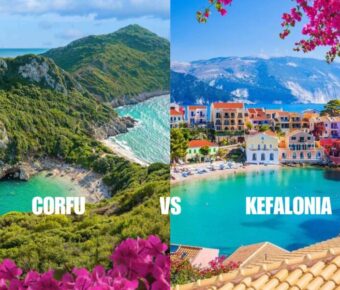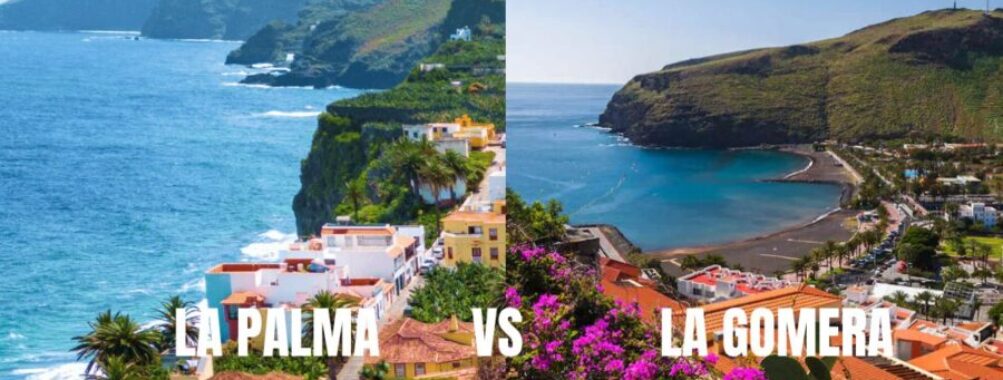
La Palma vs La Gomera: 7 Key Differences for Your Canary Islands Adventure
Picking between La Palma and La Gomera? It’s not just a toss-up. Both islands quietly sit in the Canaries, miles from the tourist chaos, but honestly, they couldn’t feel more different. If you’re after variety, culture, and things to do, La Palma’s your best bet. La Gomera? That’s where you go for peace, hiking, and the kind of slow living that makes you forget what day it is.
La Palma throws dramatic volcanoes your way, world-class stargazing, and towns like Santa Cruz that ooze colonial charm. Meanwhile, La Gomera draws you in with its misty forests and cliff-hugging villages. Time just… stretches out there.
Table of Contents
- Key Takeaways
- La Palma vs La Gomera: Quick Comparison
- Size and Geography
- Atmosphere and Vibe
- Accessibility and Transport
- Natural Landscapes and Outdoor Activities
- Hiking and National Parks
- Volcanoes and Unique Terrain
- Beaches and Coastal Experiences
- Culture and Local Life
- Traditional Villages and Architecture
- Festivals and Local Events
- Silbo Gomero and Unique Traditions
- Food, Wine, and Culinary Specialties
- Canarian Cuisine Highlights
- Signature Dishes and Local Products
- Wineries and Regional Wines
- Where to Stay: Accommodation Insights
- Paradores and Boutique Hotels
- Rural Houses and Unique Stays
- How They Compare to Other Canary Islands
- Gran Canaria and Fuerteventura
- Tenerife North vs Tenerife South
- El Hierro and Lanzarote
- Frequently Asked Questions
- What unique experiences do La Palma and La Gomera offer to nature enthusiasts?
- How do the hiking trails differ between La Palma and La Gomera?
- Can you compare the culinary scenes of La Palma and La Gomera?
- What are the historical sites that one should not miss when visiting La Palma and La Gomera?
- What are the transportation options for traveling between La Palma and La Gomera?
- How does the climate vary between La Palma and La Gomera throughout the year?
- Book Your Dream Experience
- More Travel Guides
Key Takeaways
- La Palma packs in more activities and cultural experiences
- La Gomera is for hikers, nature lovers, and quiet escapes
- Both islands let you dodge the usual Canary Islands crowds
La Palma vs La Gomera: Quick Comparison
La Palma feels bigger, greener, and just has more going on. La Gomera is smaller, quieter, and really leans into that slow pace. One island gives you colonial towns and volcanic peaks; the other, wild ravines and a kind of timelessness. Both are stunning, but they’re made for very different travelers.
Size and Geography
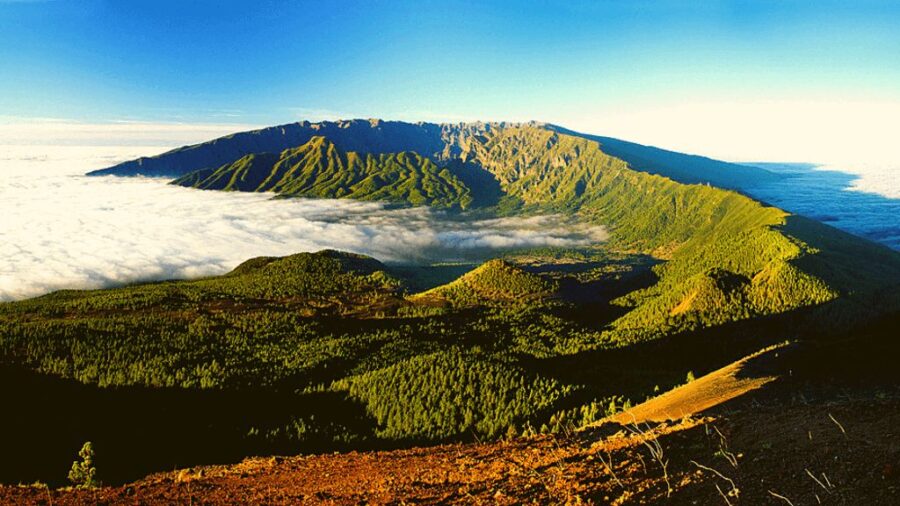
La Palma is the larger and more mountainous of the two. You’ll stumble across volcanic craters, lush forests, and black-sand beaches all on the same day. Hiking trails zigzag across the island, from high ridges down to banana plantations by the sea.
La Gomera, shaped almost like a perfect circle, feels a lot more compact. It’s famous for its deep barrancos—those dramatic ravines—and the Garajonay National Park, which is blanketed in laurel forest. The variety isn’t the same as La Palma, but there’s a rawness to the landscape that you just can’t fake.
If you want every landscape in one place, La Palma’s your winner. Prefer a small island you can really get to know? La Gomera is easier to wrap your head around.
Atmosphere and Vibe
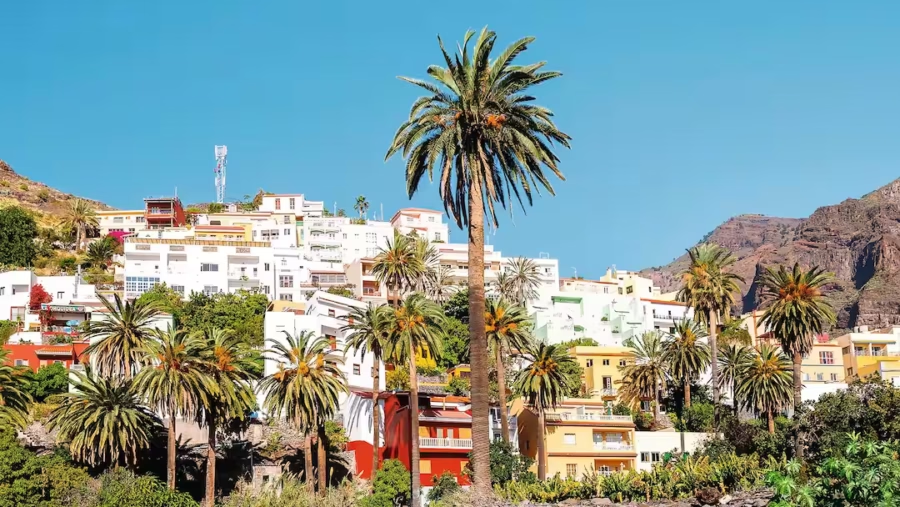
La Palma mixes quiet towns like Santa Cruz with cozy resort spots like Puerto Naos. You won’t run into big hotel strips or swarms of tourists, but there’s a bit more going on than in La Gomera. You can spend one day hiking and the next just lazing at the beach.
La Gomera slows everything down. Valle Gran Rey is the busiest place, but even there, the pace is mellow. Most people come for hiking, yoga, or just to unplug. Nightlife? Basically nonexistent, which is a huge plus if you ask me.
La Palma lets you blend adventure and relaxation. La Gomera is about stripping it all back to basics. If you want to feel “lost in time,” La Gomera delivers.
Accessibility and Transport
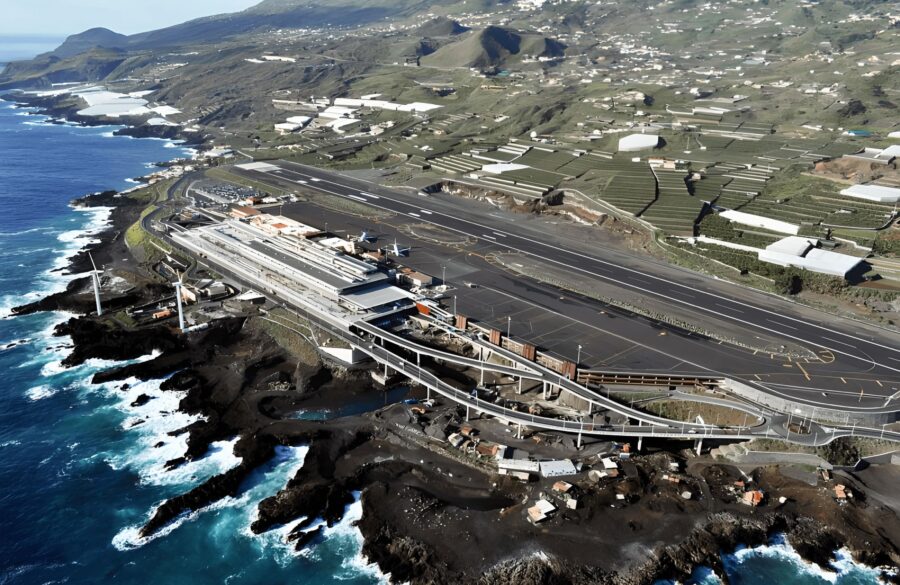
La Palma has its own international airport, and you can usually score direct flights from Europe—just check Skyscanner or Going for deals. If you’re already in the Canaries, connecting through Tenerife North is easy enough.
La Gomera skips the international airport altogether. You have to fly into Tenerife South or North, then hop on a ferry. It’s not a long ride, but it does mean you’ll need to plan ahead. For a lot of people, that extra step is part of the adventure—the island stays blissfully quiet.
Dragging bags around during transfers can be a pain, so stashing them with luggage storage near the ferry or airport is a game-changer. Once you’re on the island, rent a car if you can. Buses exist, but they’re not exactly reliable.
If you want the simplest route, La Palma is it. But if you’re up for a little detour, La Gomera rewards you with empty trails and peaceful towns.
Natural Landscapes and Outdoor Activities
La Palma and La Gomera both wow you with their rugged terrain, green valleys, and volcanic stories. Dense forests, dramatic cliffs, and black-sand beaches set the two apart in their own ways. El Hierro, though—tiny as it is—offers quiet trails and a coastline that feels barely touched.
Hiking and National Parks
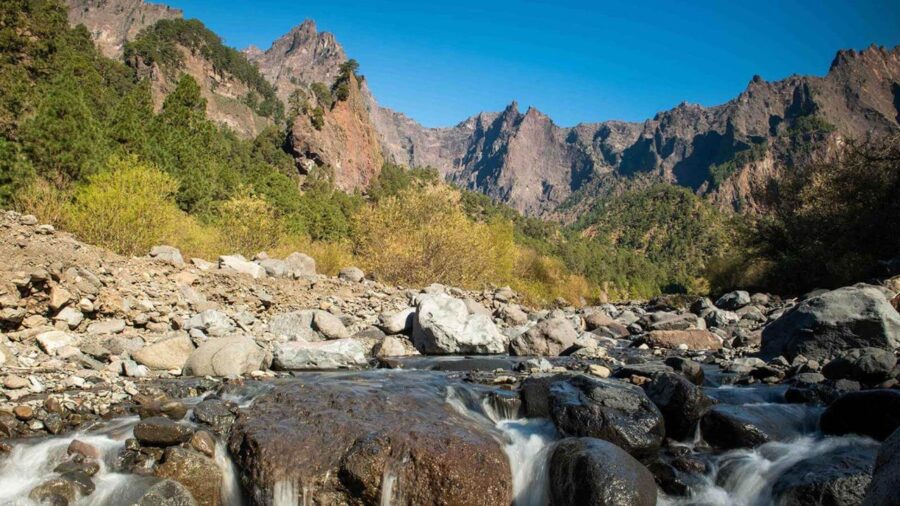
If you love hiking, both islands will spoil you. La Palma’s Caldera de Taburiente National Park is basically a giant volcanic crater filled with pine forests and waterfalls. I hiked there once and couldn’t believe how quickly the weather flipped—sunshine one minute, then mist rolling in. Keeps things interesting, for sure.
La Gomera has Garajonay National Park, and honestly, it feels like you’re walking through a fairytale. Mossy trees, soft mist, and trails that wind from the highlands down to the sea. It’s a UNESCO site, and after a few steps, you’ll get why. Each valley feels like its own little world.
You can book tours if you want someone local to show you around—sometimes, that’s the best way to get the good stories.
Volcanoes and Unique Terrain
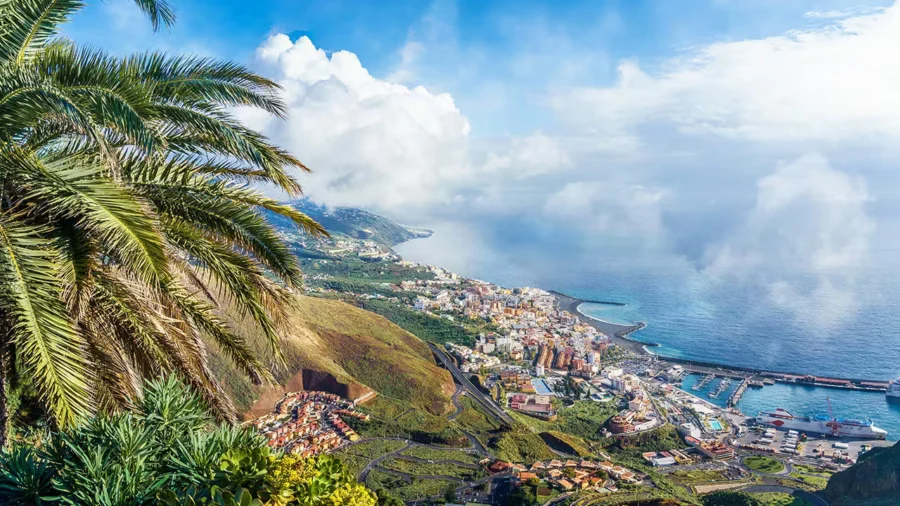
La Palma isn’t called “La Isla Bonita” for nothing, but really, it’s the volcanoes that steal the show. The Cumbre Vieja ridge is lined with craters and lava fields. After the 2021 eruption, some places still look brand new, almost like the earth is still cooling. The way black lava meets green fields is just wild.
La Gomera hasn’t erupted in ages, but its landscape is still dramatic. Roque Agando, that jagged rock spire, is impossible to miss. Hike up for views of Tenerife on a clear day—totally worth the sweat. El Hierro, if you make it there, serves up volcanic cliffs and natural pools that feel like your own private hideaway.
If you’re into geology and new landscapes, La Palma probably wins. But if you love ancient rock formations and dramatic views, La Gomera’s got plenty to offer.
Beaches and Coastal Experiences
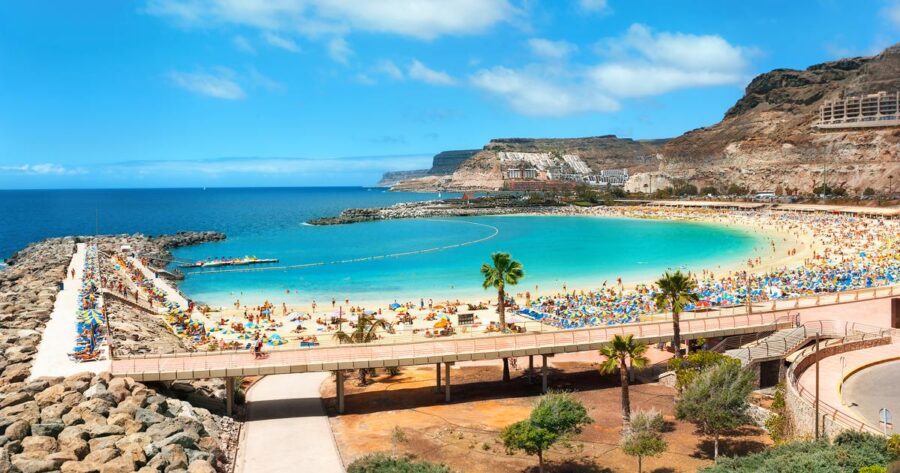
Let’s be real—these islands aren’t famous for beaches, but they’ve got some gems. La Palma’s Puerto Naos and Tazacorte have that classic dark volcanic sand and calm water. After a hike, a swim here feels like magic. I grabbed fresh fish in Tazacorte once and still think about it.
La Gomera’s Valle Gran Rey is the go-to for beach time. Wide bay, soft sand, and sunsets that make you stop and stare. Playa de Santiago is smaller but has a relaxed vibe and a couple of good spots for food.
If you like water sports, you’re in luck. Both islands have kayaking, snorkeling, and diving. You can find activities like dolphin watching or boat trips along the cliffs—honestly, seeing the islands from the water is something else. El Hierro’s waters are crystal clear, by the way, and divers love it.
If you’re all about classic beach lounging, Tenerife or Gran Canaria might fit better. But for quiet volcanic coves and barely any crowds, La Palma and La Gomera are hard to top.
Culture and Local Life
Life on La Palma and La Gomera moves at a different speed. Traditions run deep, and you feel it in the villages, the festivals, and even in the way people talk—sometimes literally across valleys.
Traditional Villages and Architecture
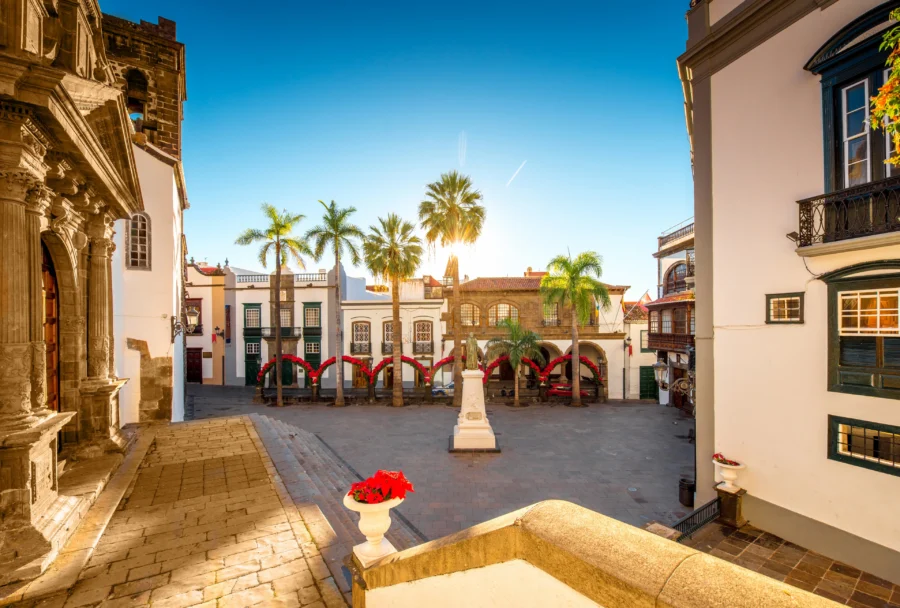
La Palma’s towns, like Santa Cruz and Los Llanos de Aridane, show off those colorful colonial houses with wooden balconies. Flowers spill over railings, laundry hangs in the breeze—it’s got that “lived-in” feel. Walking through Santa Cruz, I honestly felt like I’d time-traveled, except someone’s always watering plants or chatting with neighbors.
La Gomera’s villages are smaller, more rural. Vallehermoso and Agulo have stone houses with red-tiled roofs perched on hillsides. Terraced farms wrap around them, which makes perfect sense given the steep terrain.
Photographers, you’ll love both islands. La Palma’s towns look polished, while La Gomera’s villages feel rugged and real. Which do you prefer—elegance or earthy charm?
Festivals and Local Events
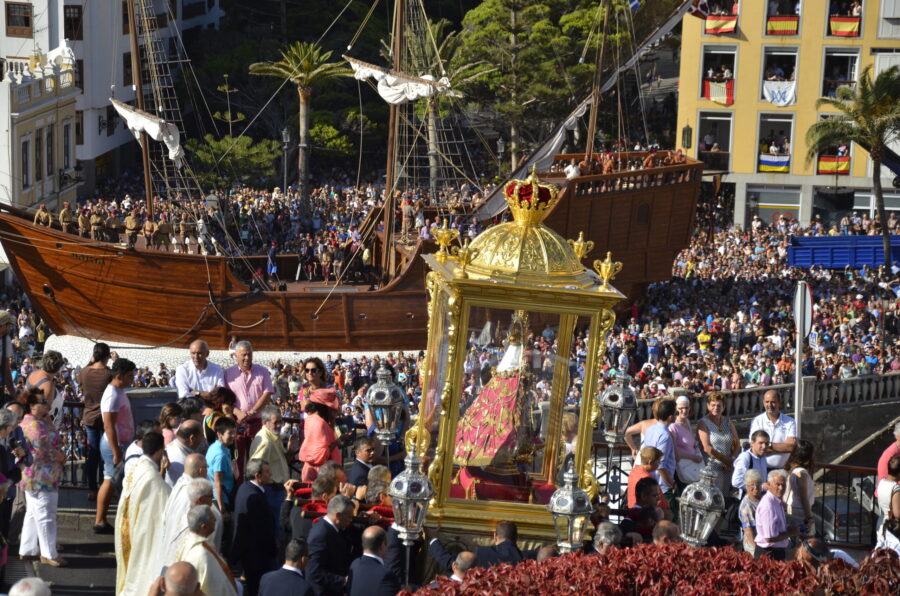
La Palma knows how to throw a party. In Santa Cruz, the Bajada de la Virgen de las Nieves happens every five years, filling the streets with parades, music, and dancing. Even if you miss the big ones, smaller fiestas pop up all year—expect fireworks, food stalls, and plenty of locals.
La Gomera’s celebrations feel more personal. They’re built around village life, harvests, and saints. You’ll hear drums and chácaras at gatherings, and it’s much more about community than spectacle. Visitors are welcome, and it’s easy to strike up a conversation over a plate of something homemade.
If you’re used to big city festivals, the slower, more intimate pace here is a breath of fresh air. You might end up sharing a meal with locals instead of just watching from the sidelines.
Silbo Gomero and Unique Traditions

La Gomera has a trick up its sleeve: Silbo Gomero, the island’s whistling language. Locals use it to communicate across valleys, and schools still teach it today. The first time you hear it, you’ll probably think someone’s just whistling for fun—until you realize they’re actually having a full conversation.
Besides Silbo, La Gomera keeps old traditions alive, like drum dances and foods like almogrote (that cheesy, garlicky spread) and palm honey. These aren’t just snacks—they tell the story of making the most of what the land gives.
La Palma blends Spanish and Canarian influences a bit more. Santa Cruz has art galleries, museums, and a cool mix of African and European touches in the food and music. It feels a little more cosmopolitan, while La Gomera sticks closer to its roots. Both islands show off their identity in ways you don’t see everywhere.
Honestly, the contrast is what makes hopping between the two so much fun. You get two totally different flavors of Canary Islands culture in one trip.
Food, Wine, and Culinary Specialties
Eating in the Canaries isn’t just about filling up—it’s about tasting the islands. Each one has its own quirks, from La Palma’s hearty stews to La Gomera’s palm honey and even Lanzarote’s volcanic wines. You’ll find simple, honest cooking, but sometimes, the flavors surprise you.
Canarian Cuisine Highlights
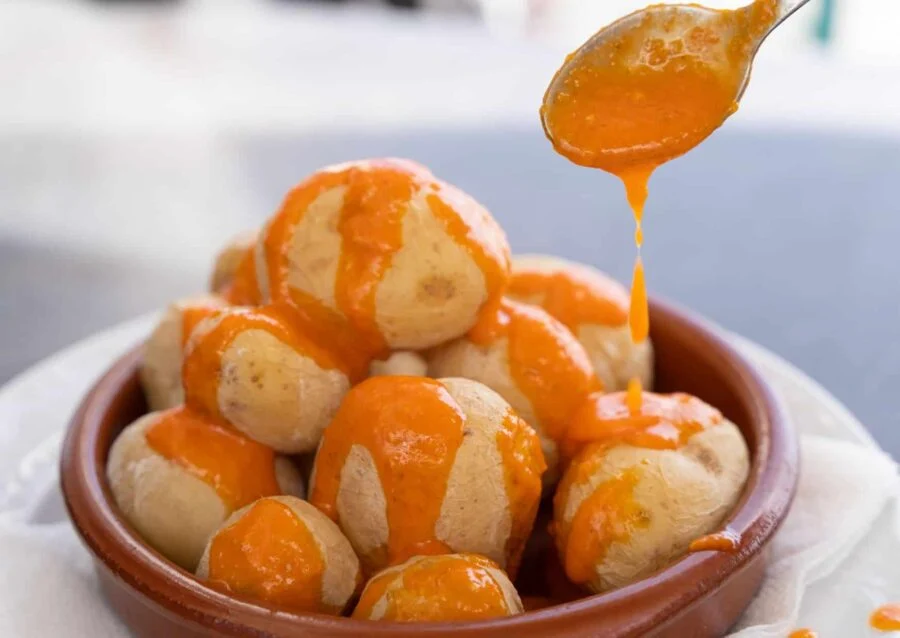
Sit down at any table on La Palma or La Gomera and you’ll notice the food looks humble, but the taste? Next level. Canarian cooking is all about fresh produce, Atlantic fish, and local goat or sheep.
Papas arrugadas—those salty, wrinkled potatoes—are everywhere, always with mojo rojo or mojo verde. Every family seems to have their own recipe for the sauces.
On La Palma, I found the food heavier and more rustic. Think thick soups, pork, and loads of gofio (that roasted grain flour that sneaks into everything). Gofio might sound strange, but stir it into warm milk and you’ll get why people love it.
La Gomera, though, keeps it lighter. Fresh fish, goat cheese with palm honey, and veggies from those green valleys—especially around Valle Gran Rey. If you hop to Lanzarote, you’ll get even more seafood and dishes with a hint of volcanic smoke.
Signature Dishes and Local Products
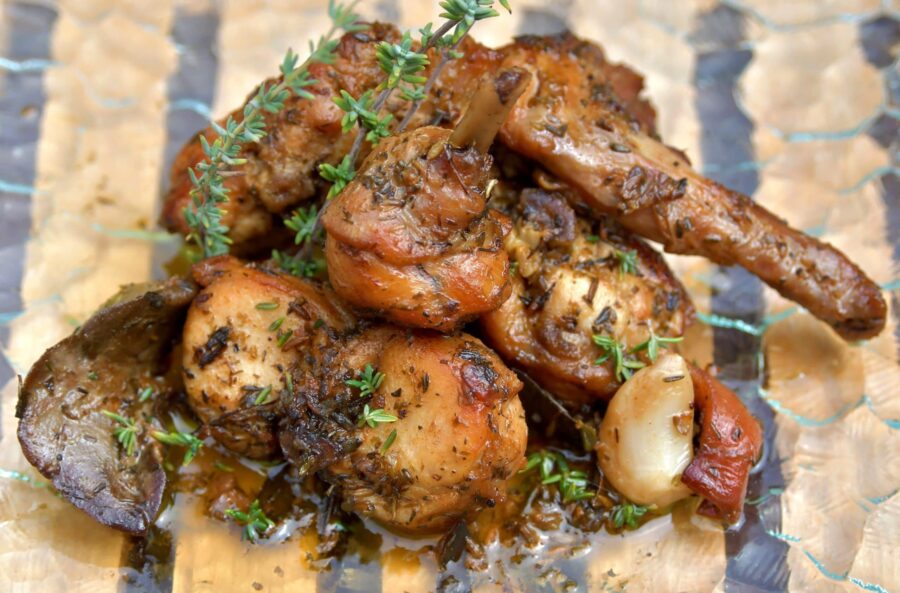
La Gomera’s claim to fame is palm honey, or guarapo, made from the sap of Canary Island date palms. It’s nothing like bee honey—think darker, richer, almost like molasses. Locals pour it over cheese, desserts, or just eat it with bread. Here’s a deeper dive into how it’s woven into the culture: La Gomera gastronomy.
You can’t skip the cheese here. Goat cheese rules the scene, though sometimes you’ll get a sheep’s milk blend. But really, almogrote steals the show—a spicy, garlicky spread from aged cheese and peppers. I find it salty, bold, and honestly, a bit addictive on crusty bread.
Head over to La Palma and you’ll stumble into hearty stews. Rabbit in salmorejo sauce pops up often, and almond pastries are everywhere, thanks to the island’s orchards. I once grabbed a bag of almond cookies in Santa Cruz de La Palma—didn’t even make it back to my hotel before they disappeared.
Lanzarote skips the palm honey but makes up for it with fresh grilled fish, local potatoes, and veggies. The volcanic soil? It gives tomatoes and onions this weirdly sweet, punchy flavor you won’t find back home.
Wineries and Regional Wines
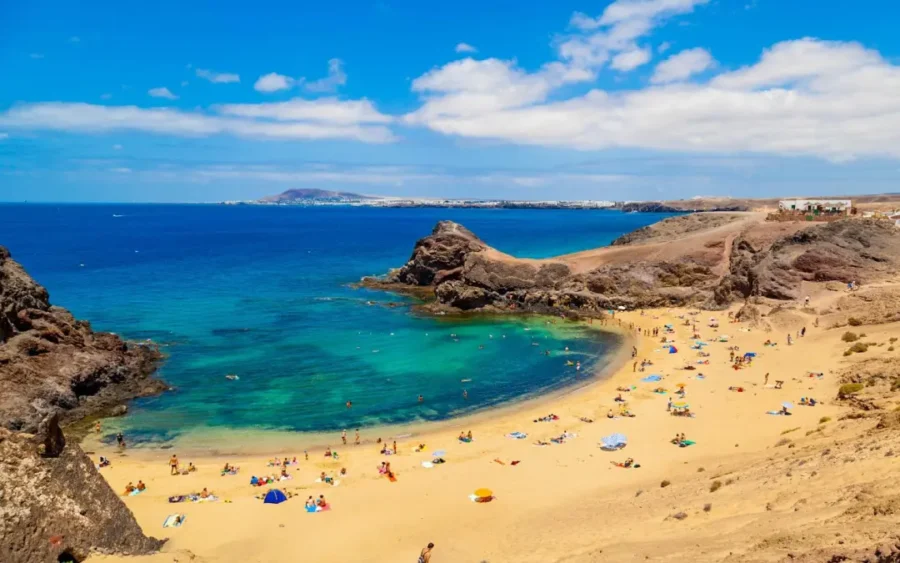
Now, wine—Lanzarote just nails it. The vineyards look wild: vines tucked into volcanic ash pits, each ringed by a stone wall. It’s like farming on the moon, but the wines—especially the Malvasía whites—are crisp, mineral, and perfect with seafood.
La Palma’s wine scene is no slouch either. Terraced vineyards cling to steep hills, and the volcanic earth gives both reds and whites a gutsy edge. I still remember this dry white in Los Llanos—smoky, surprising, and totally unique.
La Gomera keeps things smaller, but its wines are turning heads. The island snagged a DO designation in 2009, and most growers stick with the native Forastera Blanca grape. The result? Whites that are fresh, fruity, and made for warm days. Want to geek out on local wine history? Here’s a great La Gomera wine guide.
If you’re heading to any of these islands, don’t miss the chance to taste the wine. Each glass tells a story of the land—no two are ever the same.
Where to Stay: Accommodation Insights
Where you sleep on these smaller Canary Islands can really shape your trip. La Palma, La Gomera, and even El Hierro lean toward character-filled places instead of mega resorts, so you often end up in hotels or homes that feel way more personal.
Paradores and Boutique Hotels
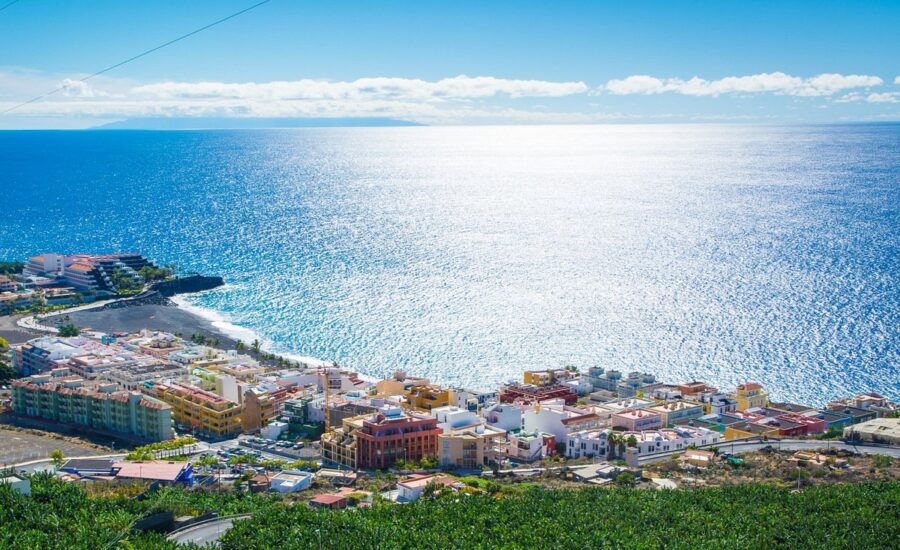
If you’re after history and charm, Spanish Paradores are a treat. On La Palma, the Parador sits above Santa Cruz, with those wide ocean views and a peaceful vibe. I could linger over breakfast for hours on that terrace.
La Gomera’s Parador perches on a cliff near San Sebastián. It’s smaller than La Palma’s, but the gardens and the view of Mount Teide across the water? Unforgettable. I once stayed there for two nights and barely wanted to leave.
Boutique hotels are a solid pick, too. In Valle Gran Rey on La Gomera, you’ll find small spots tucked among banana groves or right near the beach. Over on La Palma, Puerto Naos and Tazacorte have a few sleek places with rooftop pools. If you like to compare before you book, check hotels across both islands and see what suits your vibe.
Rural Houses and Unique Stays
For a quieter, more local feel, rural houses—or casas rurales—dot the countryside. On La Palma, many are old farmhouses with wooden balconies and volcanic stone walls. Hiking trails start right outside your door. I once stayed in one near Puntagorda, and the night sky blew me away.
La Gomera’s got plenty of these rural gems, especially around Hermigua and Agulo. They’re simple, cozy, and usually run by families who’ll happily share their favorite walks or food spots. El Hierro goes even further—cottages there feel almost off-grid, giving you a real escape.
Booking these places last-minute can be tricky, so planning ahead helps. If you want to browse a bunch at once, check out rental options that bundle rural houses, guesthouses, and apartments. It’s a fun way to spot something different from the usual hotel.
How They Compare to Other Canary Islands
La Palma and La Gomera just move at a slower, more natural pace than the bigger Canary Islands. Stack them up against the more touristed spots, and the differences in vibe, scenery, and even infrastructure really stand out.
Gran Canaria and Fuerteventura
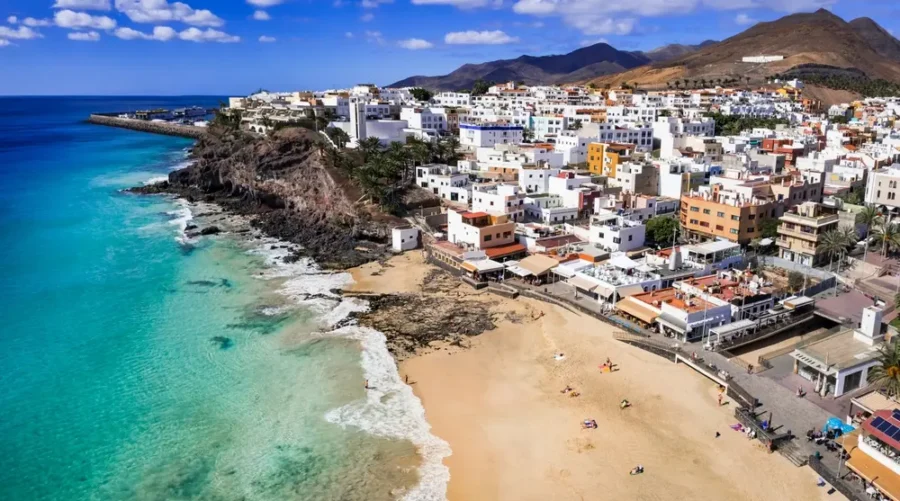
Gran Canaria’s a shapeshifter. You’ll find lively resorts like Maspalomas and Playa del Inglés, but head inland and you’re suddenly in rugged mountains dotted with tiny villages. It’s way more built up than La Palma or La Gomera, so if nightlife and shopping are your thing, you’ll find plenty.
Fuerteventura is all about those endless beaches. Long, golden sand and constant wind make it a top spot for windsurfing and kitesurfing. Compared to La Gomera’s wild ravines or La Palma’s volcanic craters, Fuerteventura feels flat and wide open.
You’ll notice flights into Gran Canaria and Fuerteventura are much easier—lots of direct options from Europe. La Palma and La Gomera usually mean a connection or a ferry, so factor in a bit more travel time.
| Island | Known For | Atmosphere | Accessibility |
|---|---|---|---|
| Gran Canaria | Resorts, nightlife, mountains | Busy, varied | Very easy |
| Fuerteventura | Beaches, water sports | Relaxed, spacious | Very easy |
Tenerife North vs Tenerife South
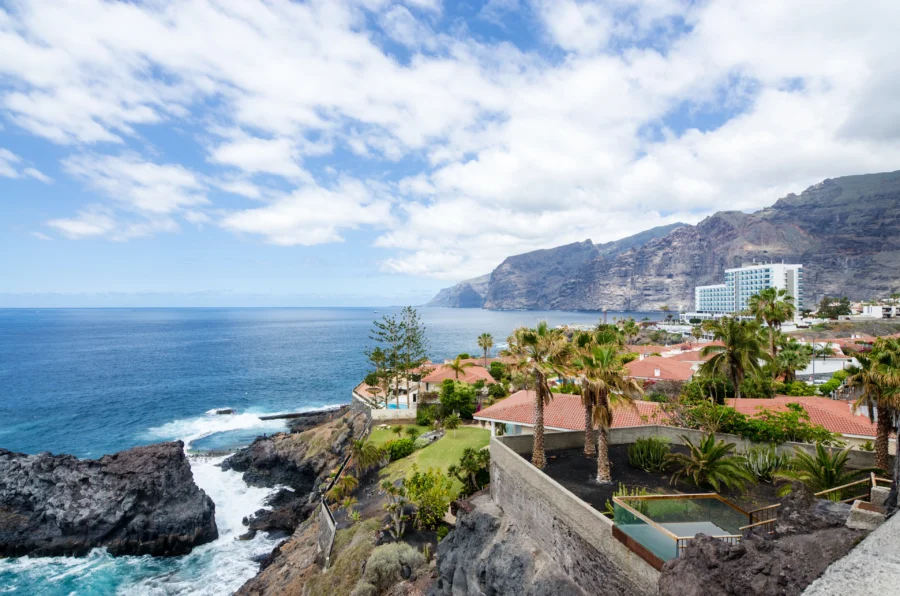
Tenerife is the most visited, but honestly, it’s two different worlds. Down south, you get purpose-built resorts like Costa Adeje and Los Cristianos. It’s sunny almost all year, with family-friendly beaches and tons of hotels. If you want convenience and a sure shot at warm weather, this is your spot.
The north feels like a whole other island. It’s greener, has old towns like La Laguna, and the weather’s cooler, sometimes cloudy. You’re also a stone’s throw from Teide National Park—hiking and stargazing here are musts.
Tenerife South is busier and more commercial, no question. Tenerife North, though, has a slower, more authentic vibe—kind of like what you find on La Palma or La Gomera.
El Hierro and Lanzarote
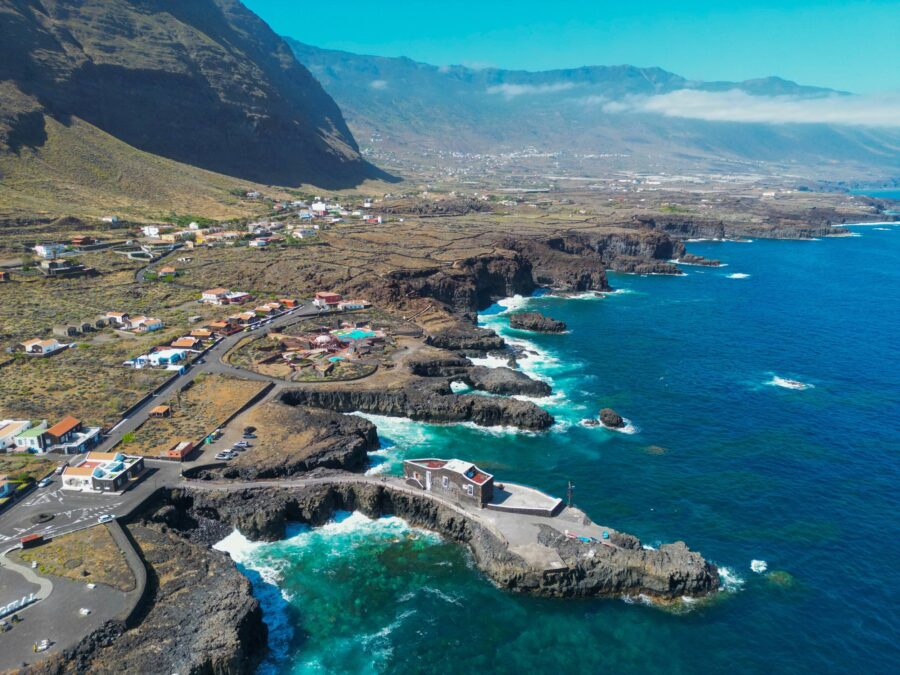
El Hierro is the least visited Canary. It’s tiny, remote, and if you crave peace, you’ll love it. The island is a UNESCO Global Geopark, and the diving is top-tier. Just don’t expect big resorts or much nightlife—it’s made for nature lovers.
Lanzarote, on the flip side, is a visual feast. Volcanic landscapes shaped by César Manrique mean whitewashed villages and art installations pop up everywhere. The lava fields look straight out of a sci-fi movie. It’s busier than La Palma or La Gomera, but there’s something about it that sticks with you.
Choosing between them? El Hierro’s your go-to for solitude and wild hikes, Lanzarote for dramatic scenery and a bit more buzz. Both feel totally different from La Gomera’s forests or La Palma’s lush valleys.
Frequently Asked Questions
La Palma and La Gomera both have that Canary Islands magic, but each one offers its own flavor. From volcanic peaks to ancient forests and quiet villages to lively food scenes, they reward slow, curious travelers in their own ways.
What unique experiences do La Palma and La Gomera offer to nature enthusiasts?
On La Palma, you can walk the rim of Caldera de Taburiente, a massive volcanic crater that feels like another planet. The island’s also a Starlight Reserve, so the stargazing is next-level.
La Gomera may be smaller, but Garajonay National Park—with its misty laurel forests—takes you back in time. And don’t miss Silbo Gomero, the island’s whistled language. It’s still alive and well—a rare blend of culture and nature.
How do the hiking trails differ between La Palma and La Gomera?
La Palma’s trails climb steep volcanic ridges with epic Atlantic views. Some, like the Cumbre Vieja route, are long and tough but so worth it.
La Gomera’s network is gentler, winding through green valleys and shady forests. It’s easy to do several short walks in a trip, which is a relief if you don’t want every day to be a marathon.
Can you compare the culinary scenes of La Palma and La Gomera?
La Palma serves up hearty food—think goat stews, fresh fish, and volcanic wines. I still remember a vineyard visit where the owner poured a smoky, earthy white that totally surprised me.
La Gomera is all about palm honey, drizzled over cheese or desserts. Meals here feel rustic and homemade, especially in those tucked-away, family-run spots in the hills.
What are the historical sites that one should not miss when visiting La Palma and La Gomera?
Santa Cruz on La Palma offers cobbled streets, wooden balconies, and old churches from the colonial days. The naval museum inside a replica galleon? Odd but oddly charming.
San Sebastián, La Gomera’s capital, has real Columbus history—he stopped here before heading to the Americas. Don’t miss the Torre del Conde, a 15th-century tower, or the old well where he supposedly filled his water barrels.
What are the transportation options for traveling between La Palma and La Gomera?
There’s no direct ferry between these two, so you’ll connect through Tenerife. That means either flying into Tenerife and catching a ferry to La Gomera, or flying straight to La Palma and then hopping over.
Flights within the Canaries are short and usually scenic, and ferries are comfy. If you plan to island-hop, it’s smart to look into travel insurance since weather can shuffle schedules.
How does the climate vary between La Palma and La Gomera throughout the year?
If you wander along La Palma’s west coast, especially near Puerto Naos or Tazacorte, you’ll probably notice it’s way sunnier than the east side. The east? It can surprise you with sudden clouds rolling in.
Start climbing those hills and you’ll feel the temperature drop—seriously, don’t forget a jacket if you’re thinking about hiking.
La Gomera keeps things pretty mild all year, but the vibe shifts depending on where you go. Up north, everything’s lush and the rain likes to hang around.
Head south and suddenly you’re in a drier, warmer world. The switch is wild—one minute you’re wandering through a misty forest, and the next you’re kicking back on a sunny beach.

